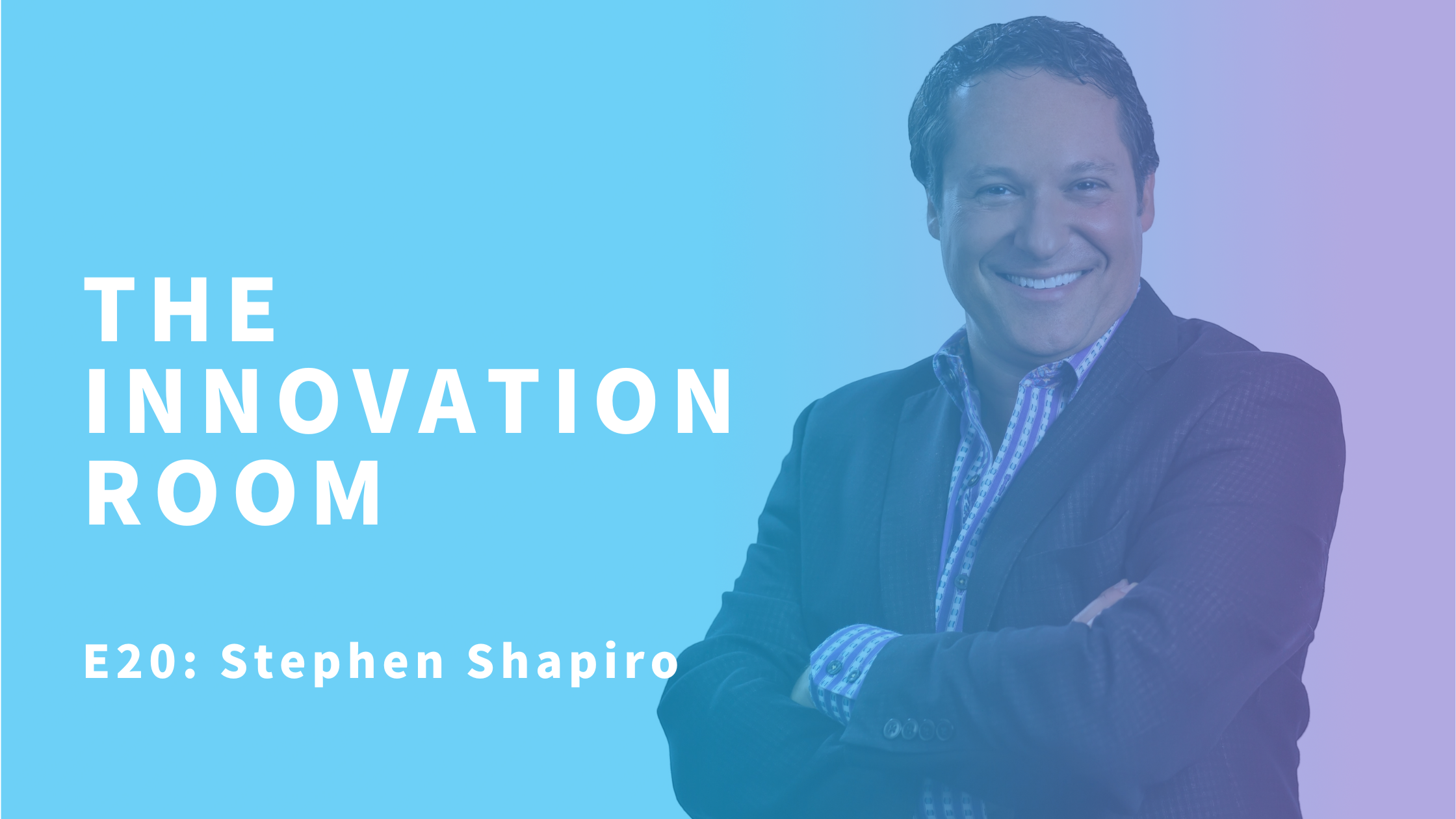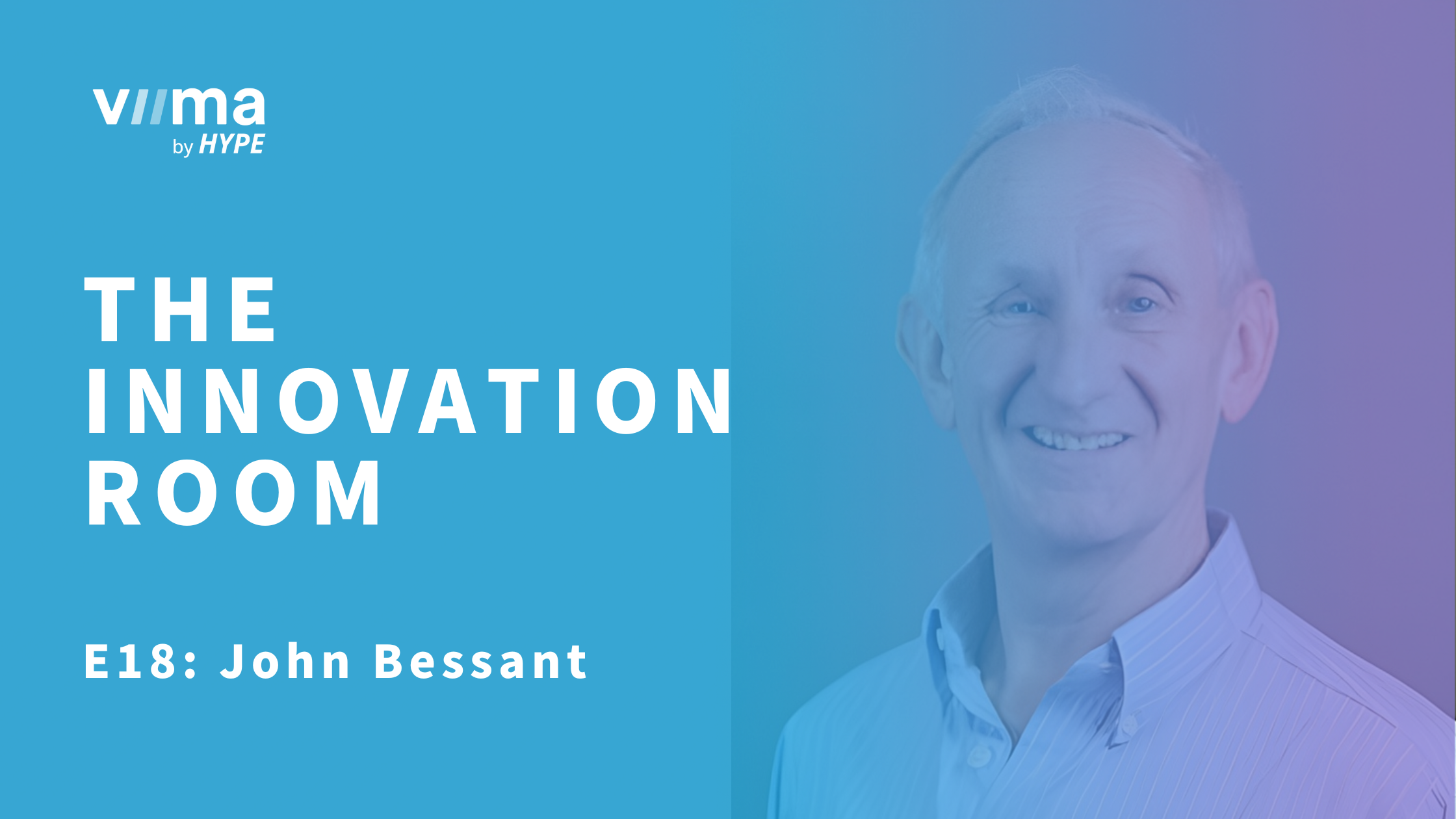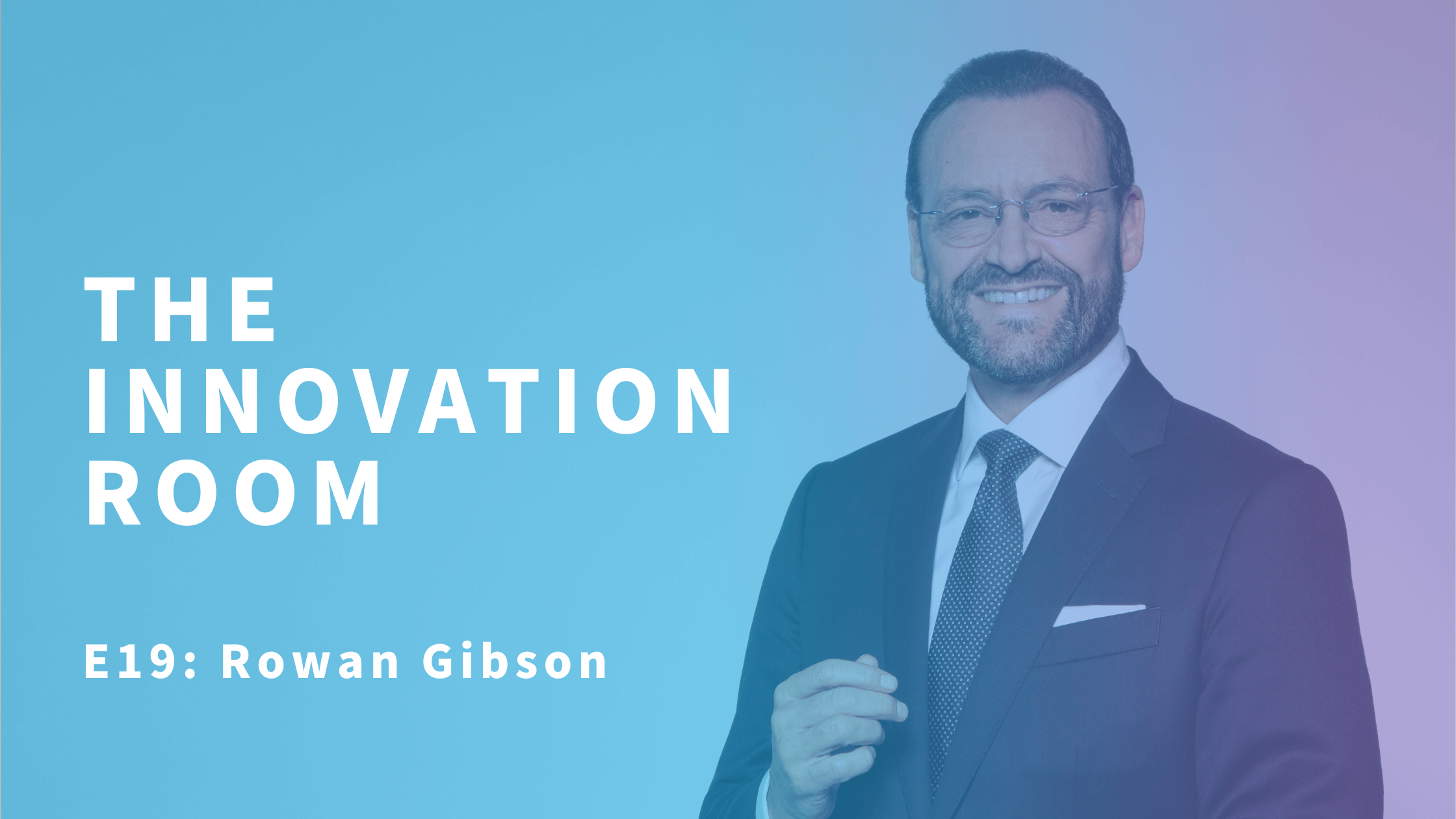Navigating Innovation and Change with Braden Kelley
After a well-deserved summer break, we are back with another Innovation Room Podcast episode. In this one, Colin and Braden Kelley discuss the interconnection between innovation and change management, the growing role of sustainability in driving corporate innovation, the impact of emerging technologies like artificial intelligence on business models, and so much more.
Braden Kelley is a well-known name for avid readers of all things innovation. He is the author of Charting Change and Stoking Your Innovation Bonfire, the creator of the Human-Centered Change™ methodology, and the founder of blogginginnovation.com. Braden has been advising companies on how to increase their revenue and cut their costs since 1996. He writes and speaks on the topics of human-centered innovation, transformation, change, and design.
Table of contents
Colin: Can you tell us a little about yourself, your background, and how you found your way into the innovation industry?
Braden: My innovation journey began when the Internet was just starting to catch on. At the time, I was working for Symantec, providing support through bulletin boards, over the phone, on America Online, and CompuServe.
I volunteered to build the company's first web-based technical support and customer service capabilities, using design thinking principles before they were widely recognized as a methodology. It was how my team and I naturally approached our work. I had the opportunity to collaborate with talented designers, focusing on the customer from the very beginning and did a lot of iterative design.
And so that's where my innovation journey truly began—applying human-centered design principles to create something new for the Internet. From there, I went on to create numerous workflow applications for the company and later, as a consultant, helped other companies with their digital transformation. For me, it has always been about the people—looking for insights and driving innovation based on those insights, rather than just ideas.
Colin: At what point in your career did you realize you wanted to write?
Braden: That was around 2006. I started blogging at blogginginnovation.com because I had a few thoughts on innovation that I believed were unique and could contribute to the conversation. At that time, innovation as a profession and an organized pursuit was just starting to take shape. So, I began writing an article here and there to share my thoughts.
Because of my experience in online marketing, I knew how to attract people to a website. As the audience grew, I felt it would be a waste to have just my voice in the conversation. So, I started inviting other voices to join in. Traffic continued to grow, and the conversation expanded, eventually leading to the creation of innovationexcellence.com, which built a large and loyal following.
I deeply appreciate everyone who has contributed to that discussion over the years. We sold the site a few years ago, but I recently revived blogginginnovation.com to keep the conversation going.
I've invited many great voices to join, like John Bessant, Greg Satell, Robyn Bolton, and even Geoffrey Moore, the author of Crossing the Chasm. I believe that innovation insights not shared are wasted, and I'm passionate about doing what I can to help accelerate innovation. With some of the challenges we're facing, that may be our only way out.
Innovation insights not shared are wasted, and I'm passionate about doing what I can to help accelerate innovation. With some of the challenges we're facing, that may be our only way out.
Obstacles to Innovation
Colin: Let's revisit your book, Stoking Your Innovation Bonfire, which you wrote 14 years ago. In it, you discussed various obstacles to innovation, including one that has been a personal pet peeve of mine: organizations not measuring or even recognizing the cost of doing nothing—the cost of standing still. I still see many industries struggling with this challenge today.
Over the past 14 years, have you observed any improvement in addressing obstacles like this, or do you think we're still grappling with many of the same challenges?
Braden: I believe we will always struggle with some of these challenges because, realistically, budgets are typically fixed. There's never an unlimited supply of money, and during downturns, budgets often shrink even further. As a result, people are constantly competing for resources—whether financial, human, or capital. This inevitably creates challenges for innovation.
Especially as companies grow, increased bureaucracy emerges. When you're a startup, the barriers are low, but as the company scales, you need more formalized processes and governance to manage that growth. Some of these barriers will always be present. However, the better we understand them and the more effectively we can codify and share strategies to overcome these known obstacles, the easier it becomes to navigate them—whether that means going over, under, around, or straight through them. 
Standardizing Innovation
Colin: Later in 2024, ISO 56001 will be published as a standard for innovation management. I'm curious about your thoughts on this. I've encountered a wide range of reactions in my conversations—some people say you can't standardize innovation, while others argue that we desperately need standards to establish the building blocks you often talk about. What’s your take on this?
Braden: When it comes to standardization, I think it's more important to standardize the tools in the toolbox rather than innovation itself. You can provide people with a set of standard tools. For example, in the construction industry, there's an agreed-upon set of tools, and everyone uses a consistent measurement system, whether metric or imperial. All the tools are based on that standard.
By having a set of standard tools, you can remain flexible in addressing the challenges you face, and you also create a way to empower newcomers to the profession. These standards provide a framework that has proven successful over time. Bodies of knowledge, like the Project Management Body of Knowledge or those from the Association of Change Management Professionals, are useful in this regard. They bring people together to discuss what works and what doesn’t, resulting in a collection of tools and approaches that a broad group of experienced professionals can agree on.
However, maintaining flexibility is key. As we move forward in innovation, new people will always be entering the field. The advantage for them is that they don’t have to start from scratch. If they seek out proven methods, they can find them now, and by attending conferences and exchanging ideas, they can learn from those who have already tackled similar challenges. There are resources available today that simply didn’t exist 10 or 15 years ago.
Interconnection between innovation and organizational change
Colin: I'm a keen advocate for helping organizations navigate change, and I know you wrote the book Charting Change. Given your background in innovation, I’m curious about how you see these two worlds aligning. As I progress in my career, I’m noticing similarities between the attitudes of corporate innovators and corporate change managers. I suspect you feel the same. Was your interest in change born out of innovation, or was it the other way around?
Braden: Stoking Your Innovation Bonfire is really about helping people build a continuous innovation infrastructure—turning innovation from a one-time event into something repeatable. It explores what needs to be in place to make that happen. In creating the book and continuing to practice innovation while speaking with professionals worldwide, one key realization emerged: innovation is fundamentally about change.
When I looked across the change literature, I found a lack of resources that could help people successfully pursue change in an organized and effective way. There are theories, but what seemed missing was a set of tools to make change more visual and collaborative.
As innovators, we're used to working with sticky notes, standing up with groups of people at a wall, and accumulating ideas while connecting the dots. I felt that this design thinking, human-centered approach—visual and collaborative—was needed in the change management space. That’s where Charting Change came from. I started creating tools to help people plan and execute change, starting with a change planning canvas at the core. From there, I developed a set of tools to help people think through what needs to be part of a formal approach to change and transformation.
This second book was designed to explain the human-centered change methodology that surrounds the change planning toolkit, which has grown from 50 to over 70 tools. It lays out methodologies and the tools behind them, aiming to make organizational change a bit easier and less confusing to approach.
Colin: I wonder if you’d also include continuous improvement in this mix. One observation I’ve made is that many established methodologies for continuous improvement could be supercharged by incorporating innovation methodologies. I often find they’re not as collaborative as we see in change management within the innovation world.
Braden: Well, I think that there are best practices within the continuous improvement space that are closely related to innovation. Continuous improvement, innovation, and organizational change are all interconnected. Some might say that continuous improvement methodologies will help you drive incremental innovation, while truly understanding people can power more breakthrough innovations.
Truly understanding people can power more breakthrough innovations.
For example, things like value stream mapping and some of the ways that I've seen people approach continuous improvement as they run events and invite their customers to participate are very similar to how innovation or human-centered design professionals approach their work. These activities can enhance the practice of continuous improvement. There’s a lot each group can learn from the other, and combining these approaches improves an organization’s chances of success.

Challenges for Innovators Today
Colin: Today as innovators—especially those working within the corporate environment—we're facing new dynamics. The UN Sustainable Development Goals are reshaping organizations and perspectives. Artificial intelligence is once again changing how people view possibilities and the future direction of their businesses. Where do you think the biggest challenges lie for innovators today?
Braden: I think the world is always changing, and the external forces acting upon us are always in flux as well. As innovation professionals, while tools and processes are useful and important, the most valuable investment we can make is in understanding the human side of innovation and change, because humans are constantly evolving too. The better we understand people, the more effectively we can apply whatever tools emerge to solve problems for them. So, as artificial intelligence advances, we can leverage it effectively.
I recently revisited an article in a white paper I wrote 10 years ago, which focused on taking advantage of crowd computing. It explored the concept of making work atomic—breaking tasks down into a level of specificity that allows humans and machines to work together.
Back then, the focus was on how to standardize human activities enough to train a computer to perform them or break tasks into small enough pieces that they could be handled by platforms like (Amazon) Mechanical Turk or other crowdsourced labor operations. These microtasks would then be accumulated into a full task. While the AI used 10 years ago was more primitive, the idea of atomizing work is still relevant today, especially now that we have more powerful tools to use.
For instance, tasks that could have been outsourced to Mechanical Turk or to workers in lower-cost labor markets—such as verifying whether an image contains specific letters—can now increasingly be done by machines. The interesting thing is that as tools evolve, if you have the right approach, you can continually adapt and enhance the tools within that approach.
Colin: What about sustainability? Are you seeing it begin to influence the fringes or even the core of where organizations are focusing their innovation efforts? I've noticed more companies shifting their products to be more recyclable and looking at their operations to reduce their environmental impact. Are you seeing this trend as well? Is sustainability becoming a major driver in pushing for improved innovation performance?
Braden: I think the answer depends, and a key factor influencing the variance between companies is how important sustainability is to them.
For some companies, like HCL Tech, sustainability is at the core of their mission. They are genuinely invested in making sustainability a fundamental part of what they do, including how they harness the energy and creativity of their employees.
I've seen some interesting examples of this. For instance, a video created by someone in my group focused on an employee experience scenario, highlighting the mindset of sustainability. The example they chose involved using artificial intelligence to help identify flight options with lower carbon footprints—an innovative application that reflects a sustainability-focused mindset.
This demonstrates a great opportunity for companies to not only focus their business on selling more sustainable products or contributing to sustainability but also to embed sustainability as a priority in various aspects of their operations.
Learn more about Braden and his work here.
Read Braden's curated blog on all things innovation here.
Connect with Colin and learn more about Hype Innovation consultants here.
You can listen to The Innovation Room Podcast on Apple Podcast, Spotify, and YouTube.
Join the 100k+ innovators reading our blog!


.png?width=50&height=50&name=Untitled%20design%20(1).png)

.png)

